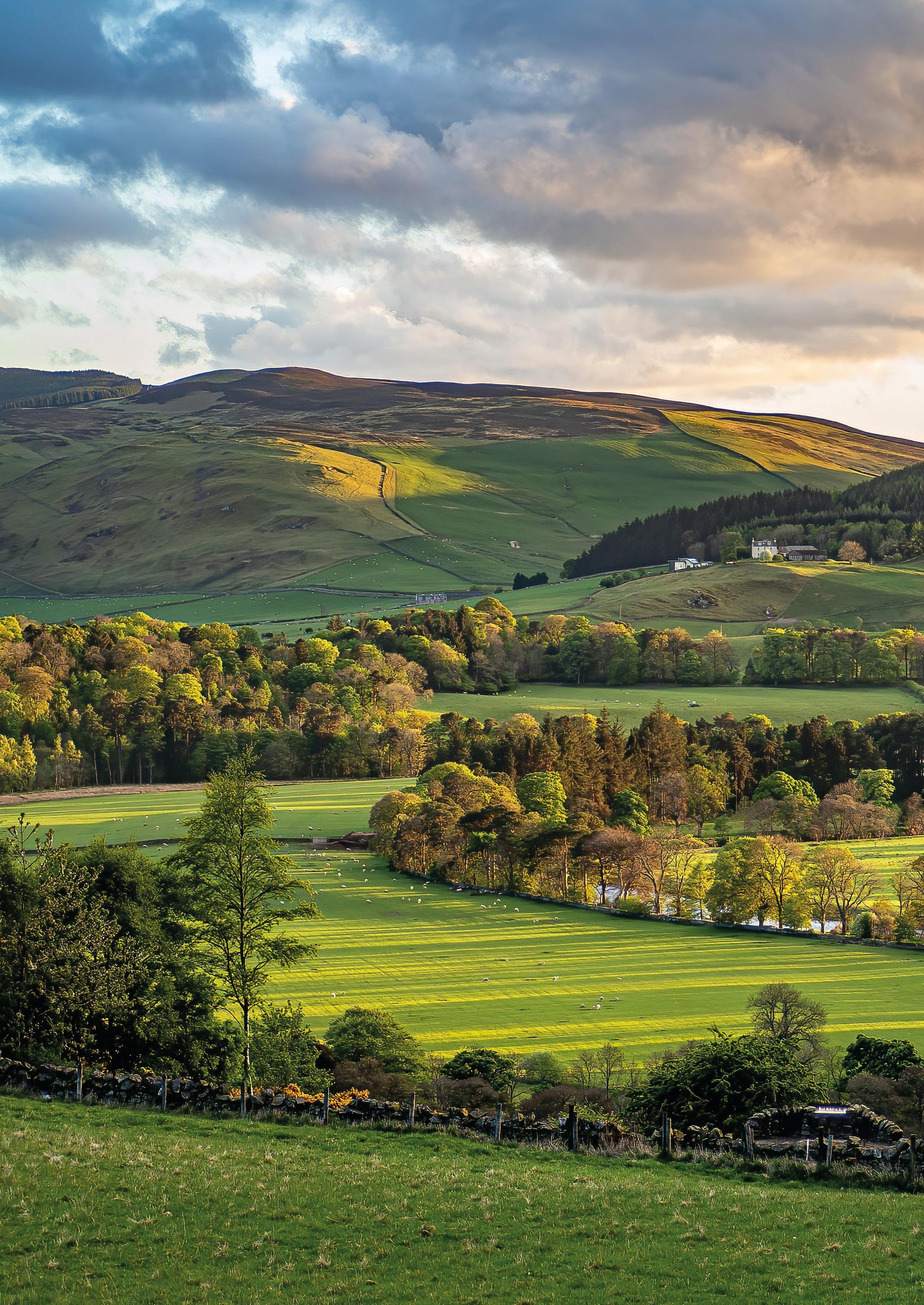IN THIS ISSUE
AGRICULTURAL INFLATION SOARS
Rising input costs add pressure to farming incomes

AUTUMN EDITION 2022
Understanding your assets and preparing for policy changes ahead
Baselining at the heart of successful carbon management

IN THIS ISSUE
Rising input costs add pressure to farming incomes

AUTUMN EDITION 2022
Understanding your assets and preparing for policy changes ahead
Baselining at the heart of successful carbon management
Welcome to this autumn issue of Perspectives. As with previous issues, we take a look at the broadest possible range of issues and topics from across the industry, as well as sharing some of the latest developments within SAC Consulting and
ANDREW LACEY, VICE PRINCIPAL COMMERCIAL & HEAD OF SAC CONSULTINGIn the spring, we were getting to grips with the terrible news regarding Russia’s invasion of Ukraine; we were reading that inflation would soon exceed 10% and that the Scottish Government was heralding the start of the new Agriculture Bill process. In this issue we take a look at the consequences, challenges and opportunities that continue to emerge and that are having an impact on our industry. After the initial impact of the conflict, we are now seeing some recovery in supply chains with that being reflected in some input prices. There is no doubt that there are challenges for many in the sector and while we’d like to wish them away, that is not the reality. Instead, we would like to help you meet these challenges head on, working with you to optimise your business.
This makes for a very diverse autumn edition. We kick off with an overview of natural capital, what it is and why it has become relevant? As the stewards, and beneficiaries of natural capital, we want to make sure that farming communities understand how others are viewing their assets.
Next up is an economist’s explanation of the factors that are driving inflation, how it relates to the livestock sector in particular and what will determine next developments.
In our ongoing series of regional focus articles, it’s the turn of our Islands-based teams to provide a little more detail of what the last six months have had in store. We move to the southwest and a reminder that it’s important to look at the basics of your business, examine your costs of production and make plans as we go into the winter and next year.
We delve further into the sheep industry this issue with an update on Eurosheep. The importance of understanding sheep nutrition is becoming apparent to many as a means to control and reduce input costs while improving animal welfare.
Our new Vice Principal Mary Thomson, Director of Skills and Lifelong Learning, introduces her passion for training at any time in your life and affirms the commitment of SRUC to supporting our youngest learners to continue their education with SRUC. Mary is kickstarting their technical apprenticeship programme and vocational skills training, collaborating with organisations across Scotland to fulfil this important aspect of SRUC’s delivery to the industry.
SRUC.
Malcolm Hosie has joined the team from the University of Edinburgh and is taking the lead on our diagnostic and trial services going forward. In line with both legislation and emerging policy, the demand is increasing for measuring our baseline environment via the testing of soils, forages and diagnosis of crop diseases.
It has never been more important to ensure SRUC has a diverse team that supports across skills, testing, farm advisory and our consulting services. With the additions to our team, we believe we are putting some great building blocks in place that focus on learners, farmers and crofters

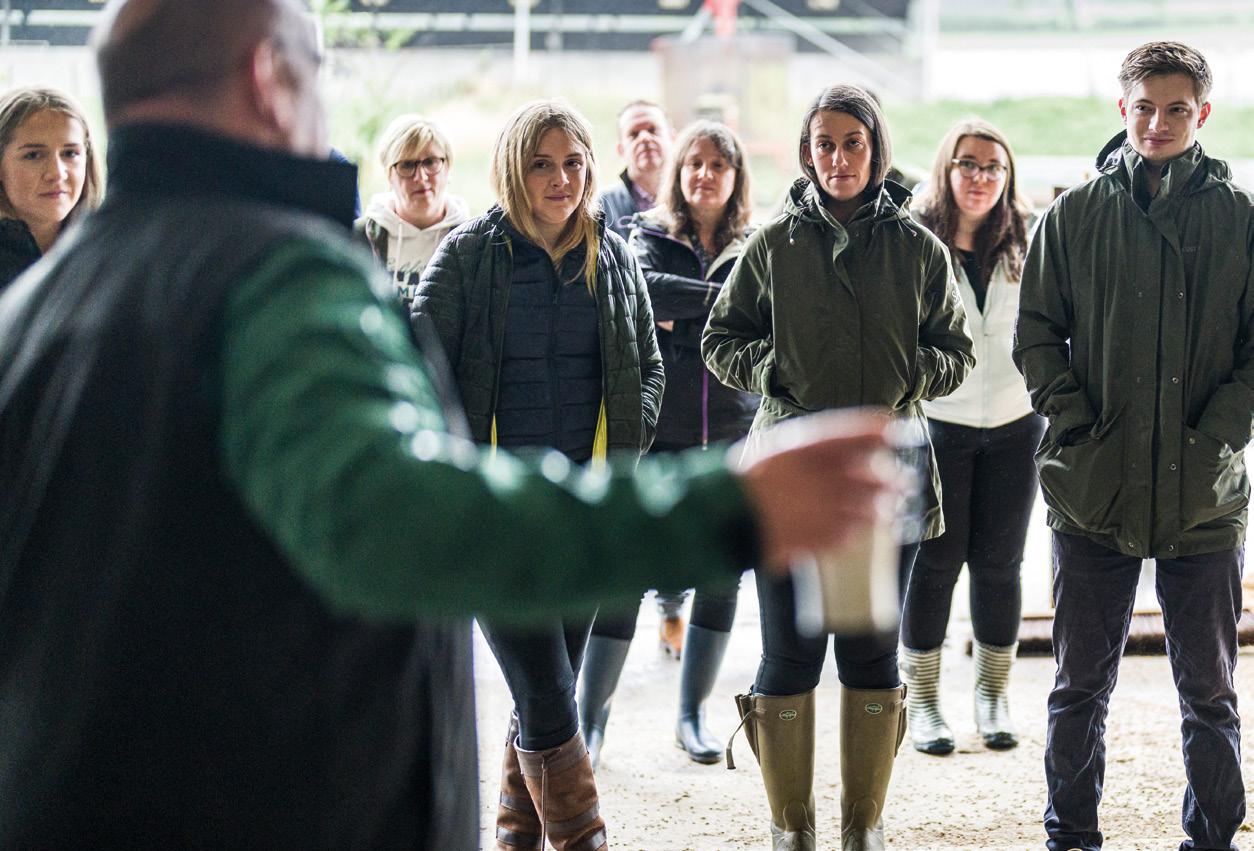
We end with an interview with Professor John Gilliland OBE. John has a long history of involvement with SRUC and we are very pleased to share his insights with you. John saw early on that farmers and crofters would play a big role in the climate change debate and that the industry had many positives to offer to meet that challenge.
As usual we share with you the new faces joining SAC Consulting. There are some cracking new recruits to our organisation that strengthen our capability across our foundation agricultural services and provide much needed capacity. We listened to your feedback that our consultants are too busy, and we shall continue to recruit to keep up with your needs.
One last reminder and that is to have your say on the upcoming Agricultural Bill. As we have said before, it can be frustrating to hear that further consultation is being requested, but on the other hand it is a chance to say what you think about the direction of Scottish agriculture.
Unfortunately, there is not a lot of detail in the consultation document, but we can all at least state what is important to us and support Government to take forward a modern agricultural policy that will reward productive farmers and crofters; that acknowledges their importance to maintaining food security and their role in contributing positively to the climate change emergency.
Each year SAC Consulting awards a prize that recognises and rewards an individual’s excellence and commitment to the advancement of our industry. The former President of Governors, Sir Robert C Stewart, instituted the prize in the extension division of the Edinburgh School of Agriculture in 1983.
The prize is judged by an independent panel, based on nominations made by colleagues. For this year, the prize is awarded to Alan Bruce, Senior Consultant and Turriff Area Manager. I would like to congratulate Alan on winning the RC Stewart Prize. Alan is a fantastic agricultural advisor, who has provided services in that region for over 34 years, with a natural interest in what makes a farming business successful as well humility and a truly professional approach. Alan embodies the independent, impartial and dedicated advice we aim to provide across the country and is a role model for many. This prize is well deserved, thank you Alan.
andrew.lacey@sac.co.uk
Scotland’s natural capital includes the diverse habitats of woodlands, heathlands, peatlands, soils, and everything else in between a landholding’s hedges and edges. In natural capital terminology, each habitat is known as an asset. This is due to the flow of benefits we receive from them. These benefits are known as ecosystem services, and are split into four categories.
To give land managers the recognition they deserve, and to prepare them for policy changes, the condition and extent of their natural capital and the supply of ecosystem services needs to be recorded in baseline assessments. The importance of such data is echoed in Track 1 of the Scottish Government’s National Test Programme, which outlines the aim to encourage landholdings to engage in the collection of baseline information.
Ecosystem services categories also allow land managers to understand their assets and prepare for the future as the Scottish Government’s national test programme aims to be completed by 2026 and it is anticipated that over 50% of future support payments will be conditional on the delivery of environmental benefits.
The ecosystem services supplied by individual natural capital assets is dependent on a variety of factors including, quality, quantity, location, and management. We cannot speculate that every meter of Scotland’s 22,000km of hedgerows supplies identical ecosystem services; some are species rich and designed for habitat connectivity, whilst others are more uniform but provide valuable shade, or they might simply exist for their cultural services, but have poor structure and little to no management. Due to the complexity of Scotland’s landscape, business types and climate, we need experts to assess the condition of individual assets, taking land
Understanding and assessing the condition of your natural capital will prove a valuable exercise for land managers as future support looks to be increasingly linked to the delivery of environmental benefits.
management threats, external pressures, and their bespoke conditions into consideration. However, this should be done in collaboration with land managers as their knowledge of their land across seasons, years, through different management approaches, and localised factors, is indispensable.
SAC Consulting, in partnership with Cumulus Consulting and on behalf of NatureScot, piloted a ‘Natural Capital Assessment Tool’ (NCAT) on a range of 50 rural landholdings across Scotland. The aim of the tool was to trial an approach to measure the baseline condition and extent of the participant’s natural capital assets.
Visits were made to the participating landholdings to assess and map the condition of their natural capital assets. On the site visits they discussed with the land manager the relationships between their businesses and their natural capital assets, the specific risks that may arise from their various land management practices and using the results from the assessment, they also helped the land manager identify opportunities to increase their land’s supply of ecosystem services.
Whether your motivation for increasing your ecosystem services is to take advantage of future government schemes or private finance opportunities, to collaborate with suppliers to increase supply chain credentials or to work with local
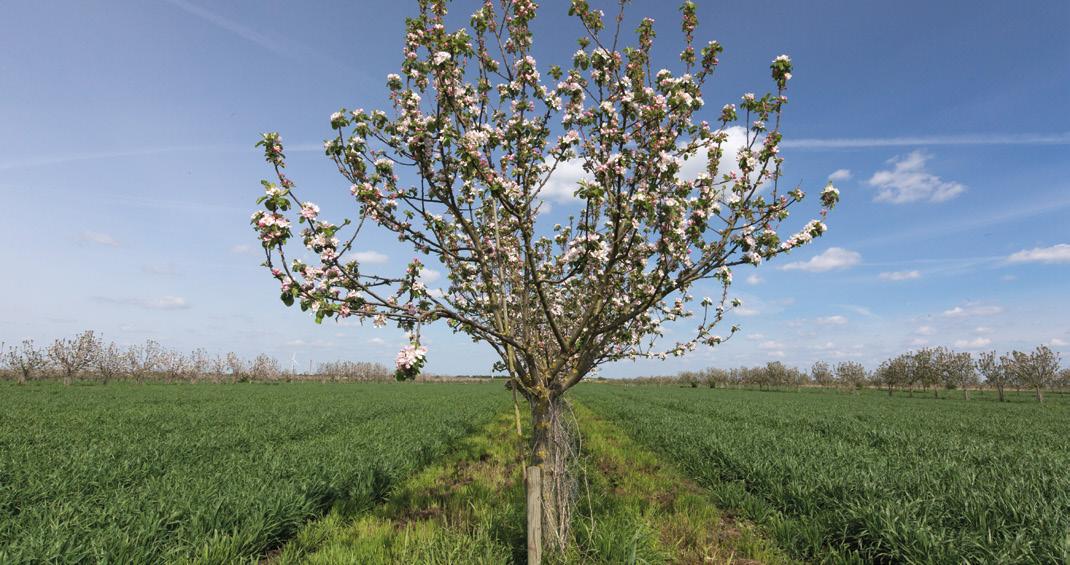
catchment groups to solve local problems, the supply of ecosystem services on your landholding can be increased through various land management methods or land use enhancements.
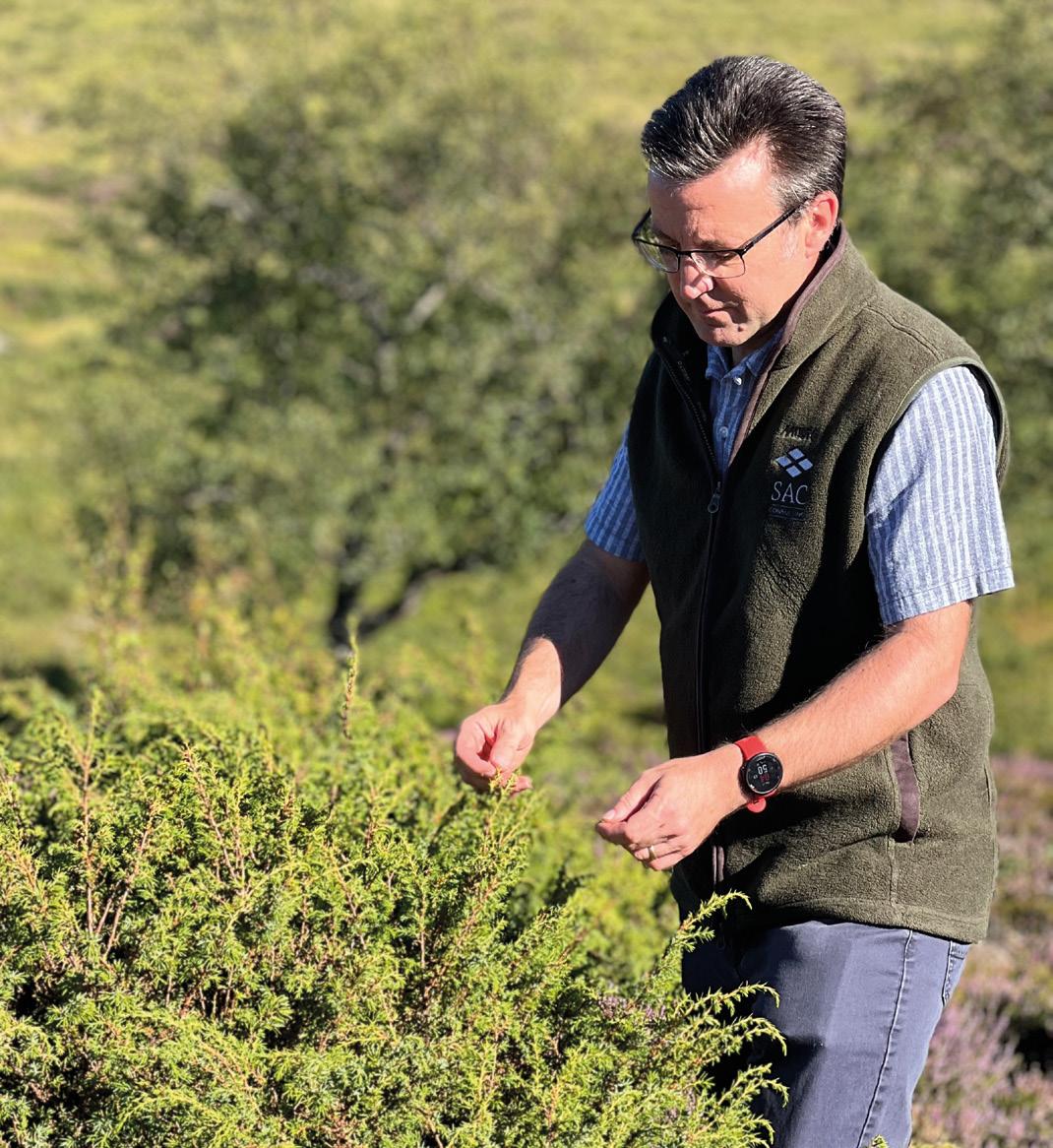
Improving the condition of degraded habitats, such as peatland, turns carbon sources into carbon sinks and connecting offline floodplains improves water quantity issues with the catchment.

3D buffers increase the ecosystem services supplied by existing riparian bufferstrips. They make the most out of the same area of land by utilising the sub-surface and overland vegetation space. They can reduce water temperatures, intercept sub-surface pollution pathways whilst also providing the existing benefits of water filtration.
Lastly, ecosystem services can be increased by creating new assets. Following advice from an SAC consultant in the NCAT pilot, a participant has since started to replace old fences with hedgerows, leading to increased biodiversity, whilst providing valuable protection for their sheep on their windy croft. More information on Nature Scot’s NCAT pilot programme can be found at www.nature.scot.
As farmers are a price taker in the agriculture commodity market, they do not have control over the prevailing market price for their produce and therefore are not able to pass the additional input costs on to their consumers in the supply chain and retail market.
According to the Agriculture and Horticulture Development Board (AHDB), the prices of fertilisers have doubled, while animal feed cost has increased by more than 30% over the past year. The global energy crisis was one of the main causes of the sharp increase in prices that we have seen for fertilisers and animal feed. Fertiliser consumes a lot of energy in its production, therefore any increase in energy cost will have a direct impact on fertiliser prices. This indeed was the case for the UK produced ammonium nitrate, where price increases were triggered by the recent increase in forward gas prices. Export restrictions by key fertiliser producers, such as China and Russia, combined with sizable fertiliser bidding by large importing countries like India have exacerbated the problem.
Animal feed prices have also been impacted by a diverse range of factors. Besides the energy crisis, reduction in global supply and hot and dry weather has contributed to soaring feed prices. Not only has this led to an early harvest of feed crops but if these weather patterns are to continue, the amount of feed available for livestock could reduce.
Feed wheat, feed barley, and maize prices are all affected by disruption in global supply and increased demand. Beyond the farmgate, the food supply chain has also been affected by increased energy prices, labour shortages, and changes in the trading environment. Since January 2021, the UK has substituted a range of EU goods with non-EU food imports, including vegetable and root products. Anecdotal evidence suggests that increasing UK-EU trade costs could be the main cause of this change. Adjustments to new trading channels as well as more expensive EU imports, have likely put additional pressure on input costs across the food supply chain.
Over the past year, Scottish farmers and land managers have been facing exceptional increases in production costs, which has put immense pressure on their farm income.
TAREK SOLIMAN, APPLIED ECONOMIST, SRUC
While output prices have increased, they are not high enough to offset the increases in production costs which eat into any available profits. Livestock farms have been hit by increased fuel, feed, and fertiliser prices, as well as shortages in labour supply and reduced support payments.
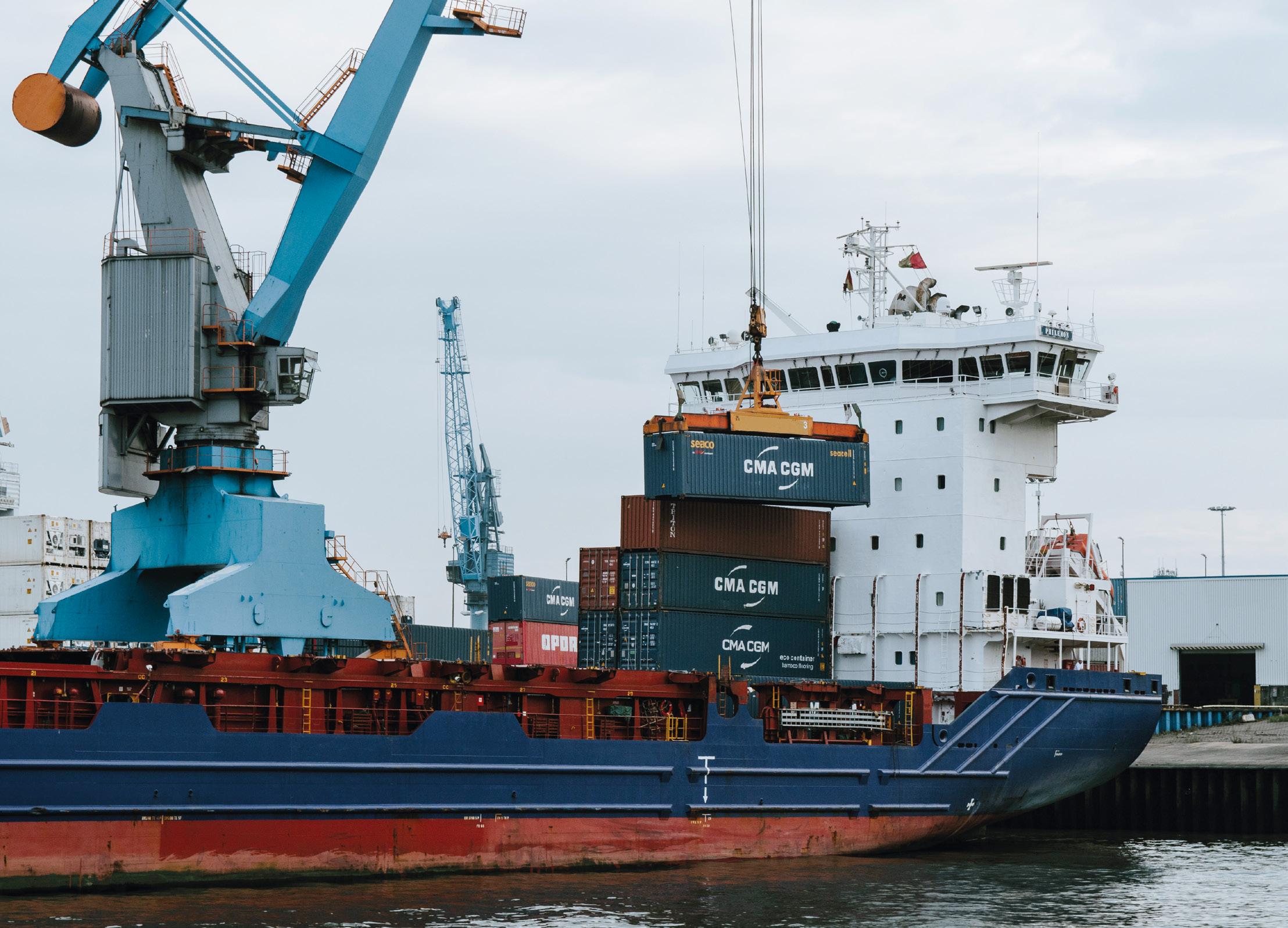
Although overall domestic red meat consumption is likely to decrease due to the cost-of-living crisis, post-pandemic demand on manufactured beef by food services and increased global demand driven by China for beef and lamb is expected to sustain the growth in beef and lamb prices. It’s important that as an industry we are active in making a case for making sure that the UK supplies such markets
Sheep and beef supply have also increased due to high cow throughput and growth in the sheep breeding stock. Dairy farmers, on the contrary, currently have fewer incentives to expand their milk production due to demand uncertainty and rising input costs. Moving forward, how our politicians manage global disruptions together with changing consumption and production levels will be the key determinants of how the inflation in input costs will impact profit margins.
tarek.soliman@sruc.ac.uk
“Presently we see some strong margins in arable and sheep sectors but the outlook for livestock farming is challenging as increased output prices are not matching the rises in input cost. Focusing on where efficiencies can be found may offer some respite, getting help where necessary to understand your costs and opportunities, while government must consider the role it can play in supporting businesses during this period.”
Farmers and crofters on the islands have been hit hard by soaring input costs and the changing regulatory landscape, leaving many questioning what the future has in store?
SUSAN PIRIE, ORKNEY AREA MANAGER, SAC CONSULTINGFarming is facing many challenges at present, but day-today business must continue and as the long summer nights start to feel like a distant memory, many of you will have started to sell this year’s crop of lambs and calves. Fingers crossed for a good price this backend!
The Northern and Western Isles face many of the same issues as farms and crofts based on the mainland of Scotland, however, some of these issues are exacerbated by the added dimension of poor connectivity. All our islands in Scotland are dependent on good ferry links for getting our produce to market and transporting inputs to our farms and crofts. The concern is that the cost of fuel, is having a devastating impact on ferry and freight costs. Nearly all inputs to farms and crofts on the isles need to be imported and any rise in these costs can make tight margins even tighter.
Despite these added pressures, we have enjoyed a good growing summer with rain never far away and although many producers have cut back on their artificial fertiliser spend, to save money, the silage and hay yields have not suffered. It thankfully has been a good growing year. Moreover, our island communities have not experienced the drought other parts of the country have had, so we have not had the same grazing pressures – an enormous help to the bottom line.
One of the issues perhaps more at the forefront of small island communities is the lack of young folk in agriculture and how there seems to be little incentive to attract the next generation into an industry which we all know and love – especially when the sun is shining, and the grass is growing. Other industries are attracting young folk by offering good pay and flexible working conditions, is there something that crofters and farmers can learn from these other businesses? Although the job can be all-consuming, there are many perks and perhaps the benefits of working in crofting and farming are not shouted about loudly or often enough. If we want to ensure our islands are thriving communities to live in, we need to be able to promote our industry and lifestyle. In the modern world, how many jobs are there, where you can be your own boss? Where every day is different? Where you can try your hand at being a mechanic, engineer, welder, fencer, vet, nutritionist, biologist and metrologist?
Older crofters and farmers are often criticised for not making it easy for the next generation to come in, however, the decision to retire is never simple, especially if you feel you and your family are intrinsically linked to the land. This feeling has been compounded by the current subsidy system; however, this system is about to change.
The time is coming where sitting on the croft or farm is no longer a viable option as we move away from the “good old days” of headage payments, in the direction of farming for biodiversity and carbon.
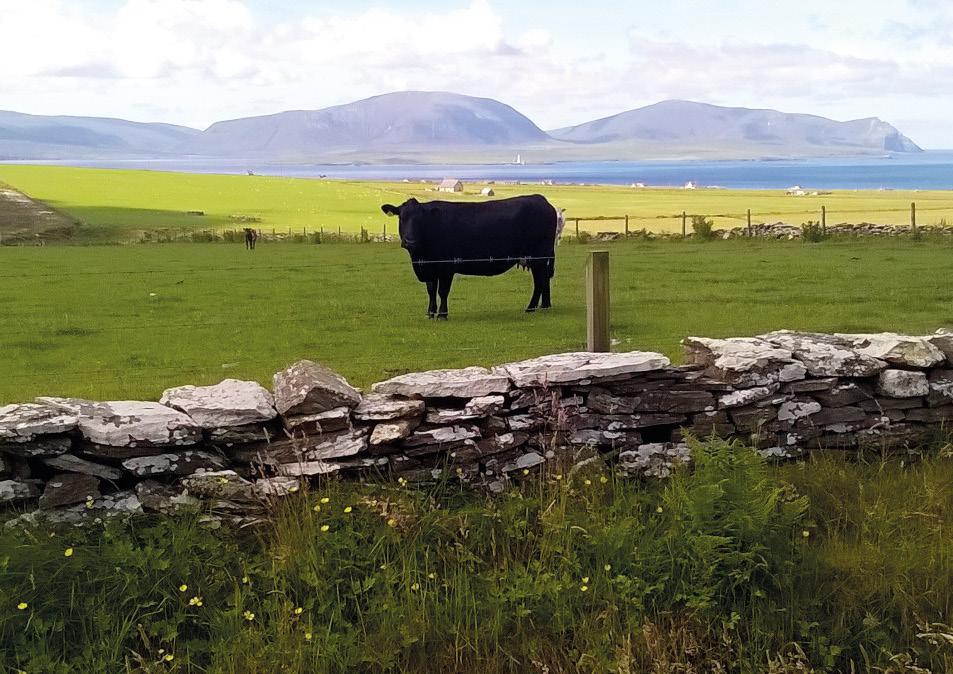
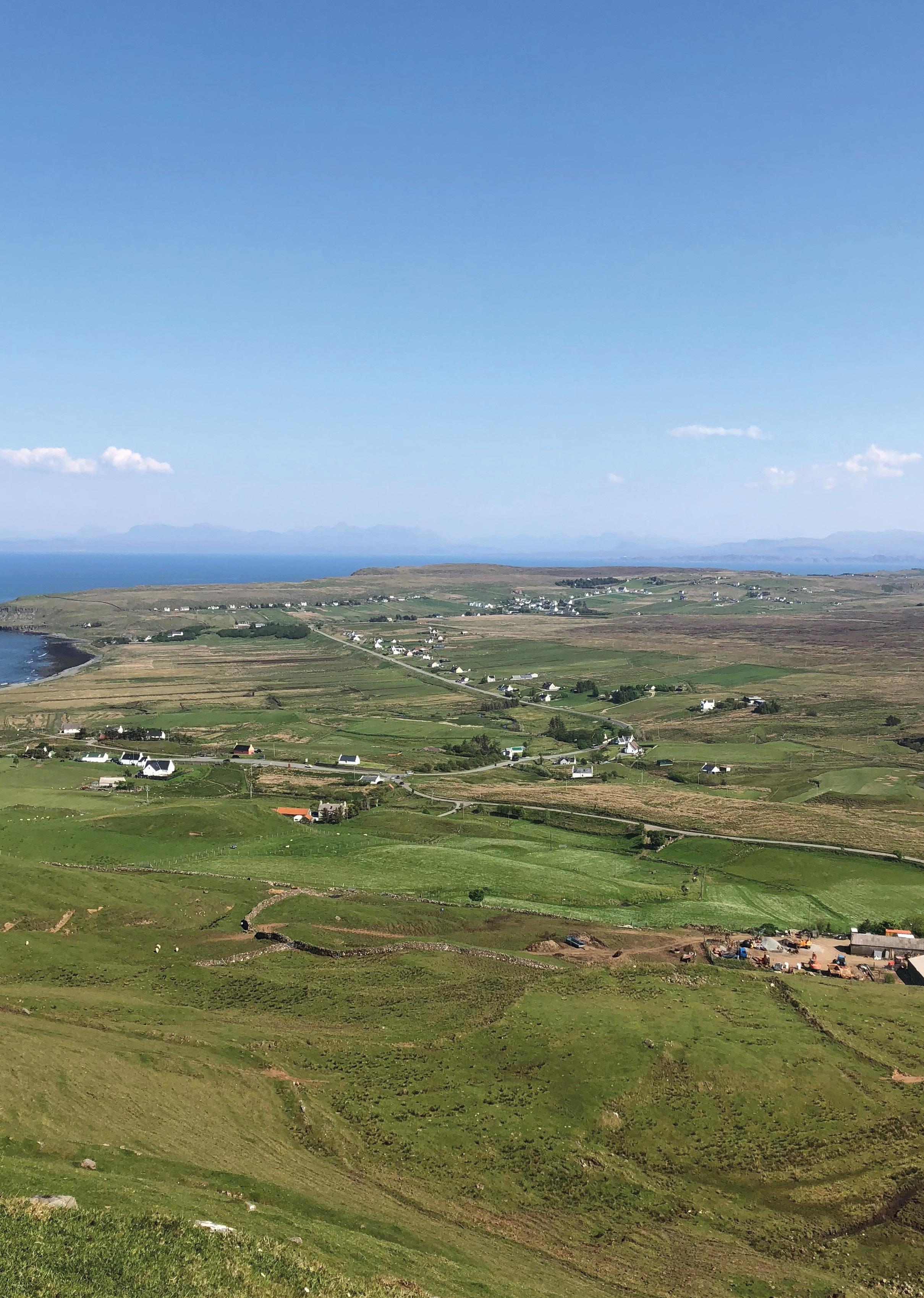
However, with change brings opportunity and here at SAC Consulting we are committed to helping crofters and farmers navigate these subsidy changes to help our communities become more sustainable.
Discussions around succession can be difficult, especially when dealing with family, history, and heritage, however, communication and openness makes these things easier. Perhaps all the family are away, but they still do not want to lose the croft or farm? There is legislation now that would allow crofting land to be rented out, with no loss of ownership. Or maybe share farming or contract farming could be an option? Thus, allowing the farm or croft to be worked and kept in a good state of repair and support another family to remain within the island community. None of these decisions are easy and SAC Consulting are always here to help with succession planning and navigating crofting regulation.
Get in touch
susan.pirie@sac.co.uk
“Nearly all inputs to farms and crofts on the isles need to be imported and any rise in these costs can make tight margins even tighter.”
As the need for action on climate change intensifies on a global scale, the opportunity for Scottish farmers and land managers to get involved has never been more urgent. Measuring and reducing greenhouse gas emissions from agricultural activities is a key target for government and markets, the carbon audit becoming a familiar task for many farms. Land and land use can be both a source of emissions and a sink, depending on how it is managed. The need for sequestration and emissions reduction from land is critical if we are to achieve the targets set out in the Paris Agreement and clarified at COP26 in Glasgow last year to limit global warming to well below 2°C.
Peatland restoration provides a great opportunity to achieve emissions reduction, carbon sequestration and biodiversity benefits without negatively impacting agricultural production. UK peatlands account for around 10% of the total land area. Here in Scotland, that rises to about 20%. Scottish peatlands store 1.7 billon tonnes of carbon, equivalent to around 140 years of Scotland’s total annual greenhouse gas emissions. Highlighting the importance of protecting and where possible enhancing these extraordinary habitats.
In the past, efforts have been made to convert this seemingly unproductive land into something more profitable; peatlands were drained to allow for livestock grazing and tree planting, peat was also cut for burning and to supply the horticultural
industry. These actions have contributed to the degradation of over 80% of UK peatlands. Reversing this degradation could be a key ally in the fight to tackle climate change, potentially opening a new revenue stream for farmers and land managers who are lucky (or unlucky, depending on your persuasion) enough to manage peatlands.
A healthy functioning peatland acts as a carbon sink, as plant life and mosses on a peatland die, they decompose extremely slowly due to the waterlogged nature of peatlands. This creates a system where the carbon taken in by the plants (Sphagnum Mosses) through respiration is greater than the carbon emitted through decomposition, creating a net carbon store in the resulting organic soils that we know as peat.
The carbon stored in peatlands accumulates over millennia, but if the waterlogged conditions are lost, then the peatland can become a source of emissions extremely quickly. However, these degraded peatlands can be saved through a combination of different activities to help restore them, the benefits of which are twofold in terms of emissions; rewetting stops carbon emissions from the peatland while also creating the opportunity for the peatland to function naturally again and begin to sequester additional carbon. Peatlands are also an extremely important habitat for a multitude of rare species and their restoration would be hugely beneficial for biodiversity.
Protecting and enhancing our degraded peatlands will prove crucial in the journey towards net zero and restoring lost biodiversity.
SÉAMUS MURPHY, CONSULTANT, SAC CONSULTING
As with most nature restoration projects the line between success and failure is thin, SAC Consulting have been working to ensure that peatland restoration projects we are involved in, fall on the right side of that line. One of the most crucial phases of the peatland restoration process is the initial feasibility study which identifies whether restoration is required and supports what restoration activities are needed. This has in the past been completed by expert surveys across the proposed restoration area, where peat depth and identification of features such as hags and gullies can take place. Despite the best efforts of surveyor’s, features are inevitably missed on walk over surveys, measurements may be slightly off and estimation of slopes can be lacking. SAC Consulting have trialled the use of drone mounted sensors to try and improve the accuracy of surveys, whilst also improving the level of data available. Using high resolution aerial imagery and LiDAR sensors, the quality of data guiding restoration activities has hugely increased.
This improved data collection at the feasibility study stage is likely to improve the success of the restoration projects and ensure that any carbon credits sold off the back of peatland restoration are scientifically robust and credible data is available to support when scrutinised in the future.
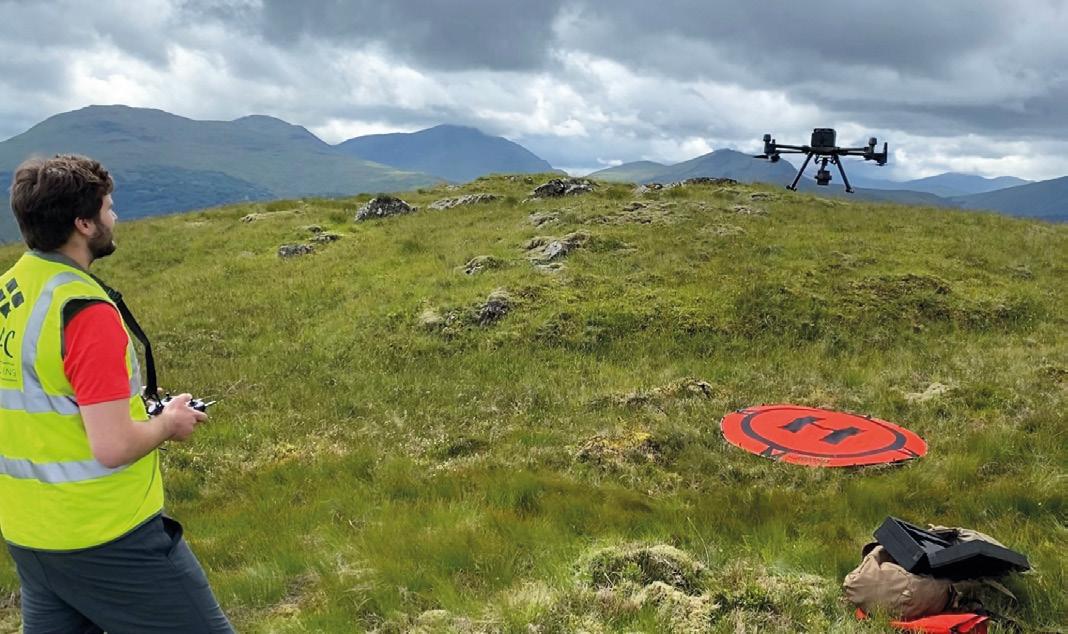
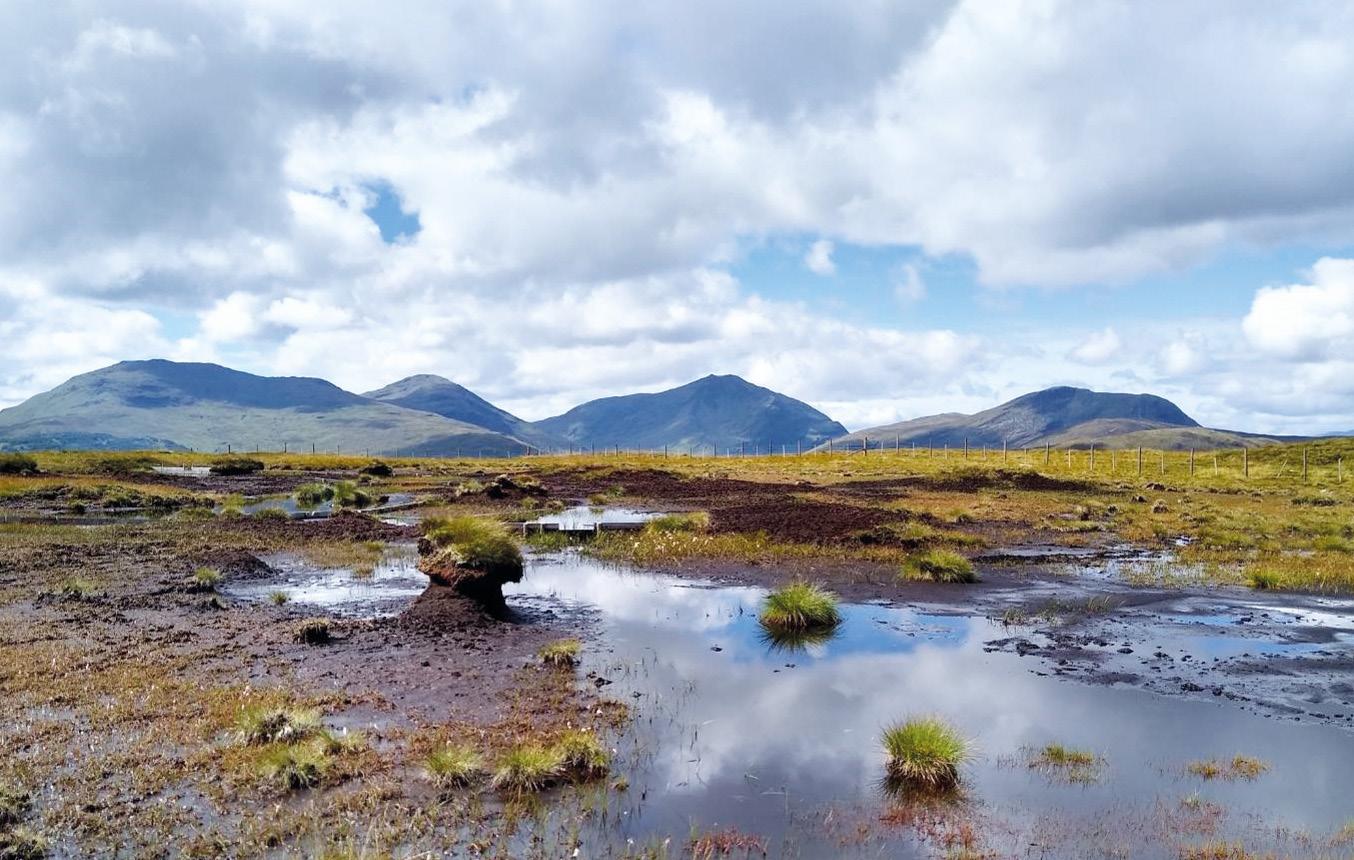
“Peatland restoration provides a great opportunity to achieve emissions reduction, carbon sequestration and biodiversity benefits without negatively impacting agricultural production.”
Scotland has committed to restoring 250,000 hectares of peatland by 2030.
We have had a good year for grass growth in the Southwest and have fortunately escaped the excessively dry conditions experienced by those in the east and borders areas. Silage stocks have been replenished, albeit with varying quality, and even hay has been made this year. Although there have been mixed reports on winter cereal yields, the spring crops look strong. Prices remain buoyant with milk approaching the mid 40’s and are forecast to near the 50ppl mark. Cull cows are meeting strong prices, cull ewes remain a good trade and prime lambs are still grossing over £100/head in August! What is not to like?
Looking ahead to the winter is a concern; there appears to be no significant drop in rocketing fertiliser prices. Ammonium nitrate prices are over £830/t, triple super phosphate £930/t, and £810/t and £770/t for silage and grazing fertiliser respectively. Although back on the hefty 2022 prices, it is still a significant increase on 2021. Fertiliser should be used strategically next spring, targeted on the most productive land of suitable pH, to boost grass growth and avoid the alternative of significant yield losses or the need for sizeable stocking rate reductions.
Recent shipments of eastern Europe and Ukrainian grain have offered a glimmer of cereal price easement, but despite a good UK harvest, the energy cost of processing,
compounding and transporting concentrate feeds, will mean significant price rises to £400 to £450/t this year. Inevitably, the high feed prices will limit what finishers can pay for store cattle and prices will most probably remain static.
It is important to start winter feed planning and budgeting now; get forage analysed and, either reduce purchased feed requirements, or optimise concentrate inclusion in rations. In terms of stock numbers, remove any underperforming or non-productive stock before the winter.
Red diesel hovers around £1/litre and electricity prices have doubled. As well as significantly increasing production costs, it also increases input costs, contractors’ charges, and many other necessities. Many electricity contracts are up for renewal at much higher prices. Fuel prices vary daily and it’s worth calling several suppliers to compare prices and ensure that you are getting the best deal possible.
Knowing your production costs will help identify changes needed to make your business more resilient to external changes. Take a critical look at which enterprises are profitable, and which offer little return for the effort.
Despite a good growing season in the Southwest, soaring feed, fertiliser and fuel costs will mean a tight winter ahead for many farm businesses.
RAYMOND CRERAR, SOUTH WEST AREA MANAGER, SAC CONSULTING
Could the balance of your enterprises change to reduce the reliance on high-cost inputs, or small changes made to increase margins? A partial budget will help identify the financial benefit of a proposed system change. For example, selling lambs as stores now, versus purchasing feed to finish them and the impact of carrying more sheep on ewe flocks. Consider selling well grown suckled calves, rather than yearlings next spring or cashing in on dairy bred beef calves instead of selling them as forward stores.
Land prices have rocketed to an all-time high. This has been underpinned by the tree planting potential of land which is still heavily supported by the Scottish Government and sought after by investors seeking to offset their carbon emissions from non-agricultural sources. This has been positive for people selling farms or land, but these exuberant prices have proven very difficult to financially justify, for those looking to grow their agricultural business. Policy makers and politicians need to take heed of what has happened in New Zealand in recent years with the mass tree planting of productive land and how it has decimated some farming areas and once thriving rural communities.
Looking back at events over the last two and a half years, they must also remember that we now live in a very different and fast changing world where food security is of paramount importance.

raymond.crerar@sac.co.uk
“Knowing your production costs will help identify changes needed to make your business more resilient to external changes.”
nitrate
SRUC’s commitment to nurturing lifelong learning to support individuals to embrace new opportunities throughout their career journey.
DR. MARY THOMSON, DIRECTOR OF SKILLS AND LIFELONG LEARNING, SRUCOur sector currently faces many challenges, including workforce skills shortages exacerbated by recent global events.
A skilled and enterprising workforce will be key to driving regionally anchored and globally connected economic recovery for Scotland. SRUC is addressing this through an integrated approach to delivering the research informed training and skills development required to develop talent in the sector and improve business productivity.
SRUC’s place-based focus and wide-ranging skills development opportunities ensures that, no matter when and where you begin your journey, there is always an opportunity to return for the next stage in your professional or personal development at a time that works for you. You might begin in your senior phase at school, as an apprentice, a career changer or when you need to refresh your skills to keep pace with change in the sector.
SRUC constantly updates training provision, responding to changing industry requirements. For example, we identified a peatland restoration management skills gap and developed bespoke training covering the full range of skills required including field work, mapping and data analysis to support decision making and design of appropriate restoration techniques.
“Meeting our climate change targets for peatland restoration in Scotland will require a significant increase in the workforce involved in designing and delivering peatland restoration and this short course, commencing this winter, will be really valuable in developing the skills that will be needed to reach net zero.”
Becky Shaw, Nature ScotFor our sectors, vocational learning is critical. This is a subject important to me, having run a rural business, working closely with farm clients and communities to support best practice livestock health management. My experience in Government, where I contributed my in-depth understanding of how policy might be received and implemented in a practical setting, further highlighted the importance of industry-relevant continuing professional development for the sector.
I have first-hand experience of the challenges of recruiting and retaining a skilled workforce and have witnessed the productivity and livestock health and welfare benefits that skills development can bring not just at individual business level, but for the Scottish and UK industry on an international stage. SRUC is addressing these challenges by embedding contextualised employability and enterprise skills development in all learning programmes.
Student employability skills are developed on campus and, where appropriate, during sector work placements including internships with our SAC consultants- a fantastic opportunity to apply knowledge in practice and further develop the communication, problem solving, and teamwork skills required for effective workplace performance!
In 2023 I am excited to launch SRUC’s new technical apprenticeship programme, using work-based learning to support development into leadership roles. Apprenticeships are a partnership approach with employers, addressing workforce challenges and improving skills, knowledge and understanding. Apprentices ‘earn while they learn’ and new students can apply on leaving school or college, as career changers or to develop themselves in an existing role. For employers, apprenticeships can be a brilliant opportunity to develop your business, improving productivity, morale, staff loyalty and quality of work.
The wide skillset required within the sector means that employees and business owners may be required to be mechanics, animal health experts and meteorologists all in the same day! Add to this the pace of change and journey to net zero and it’s more important than ever to take some time to refresh your skills, build confidence or develop your team by attending a short course or training opportunity. Short courses, such as cattle hoof trimming and peatland restoration project management, are taught in small groups in a mixture of practical and classroom settings to ensure the best possible experience. SRUC also provide flexible distance learning opportunities such as the Agriculture Professional Practice, Organic Farming and Wildlife and Conservation Management postgraduate diplomas.
There has never been a better time to cultivate your own future with SRUC and develop the knowledge and skills required to access new opportunities, build confidence and achieve your goals.
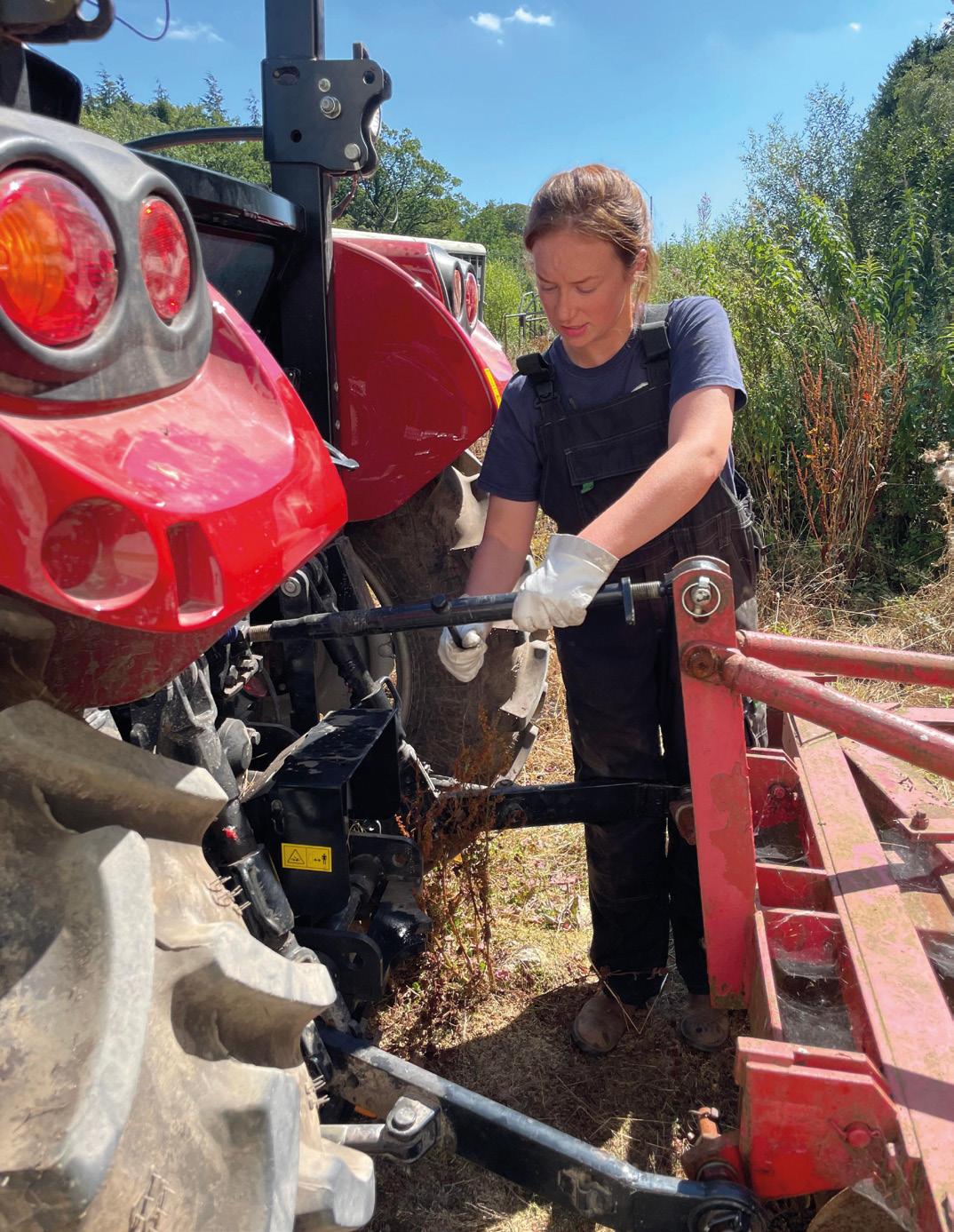
mary.thomson@sruc.ac.uk
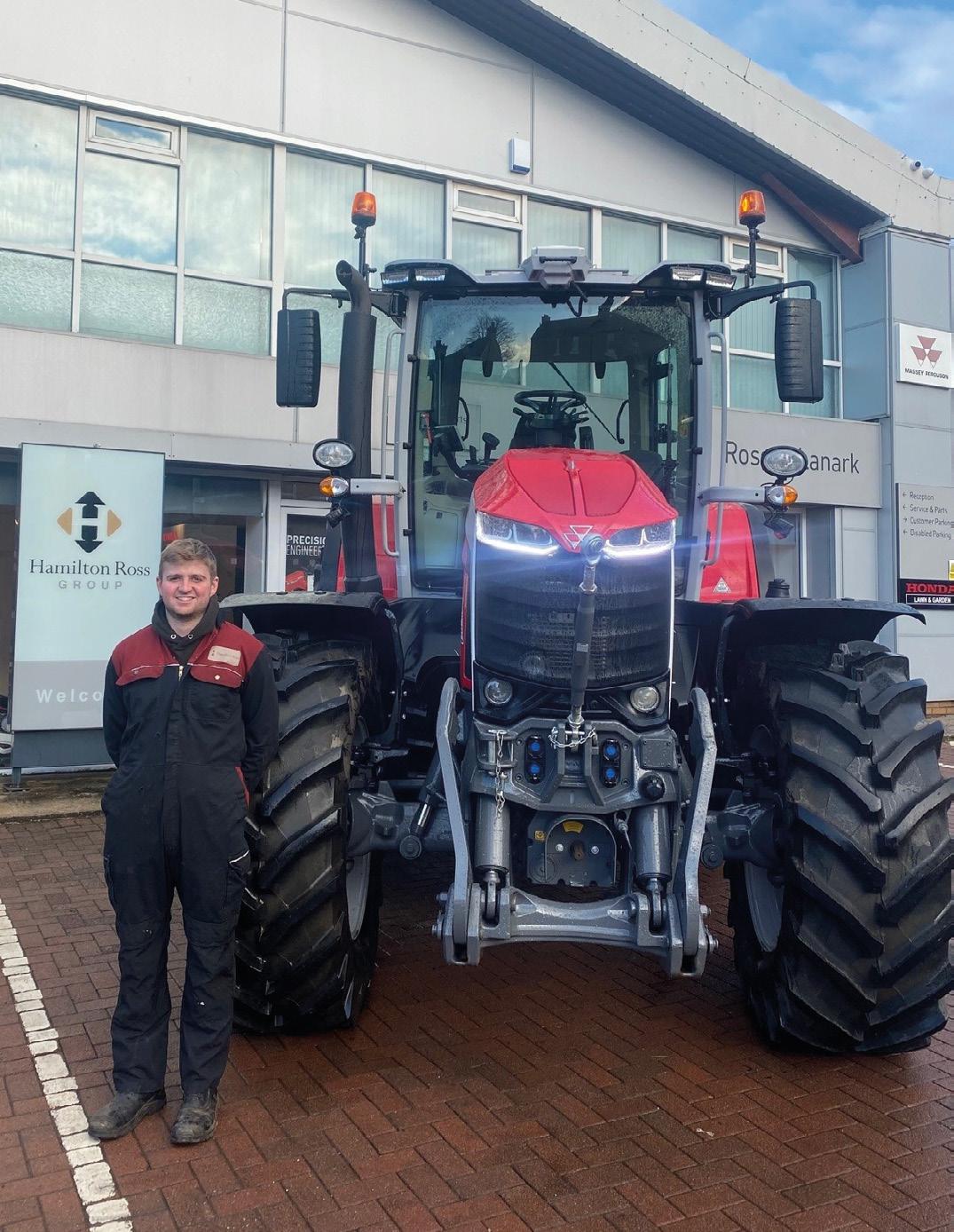
Sheep meat and milk production is an important agricultural sector in the European Union and neighbouring countries. Despite a 50% decline in the sheep sector since 2000, the European Union is still home to 85 million sheep on 830,000 farms, and efforts to improve the sustainability of their production is high on the EU agenda.
The EU-funded EuroSheep project has been tasked with creating a network of researchers, advisors, farmers and other industry actors, all interested in improving sheep health and nutrition. The project started in January 2020 and involves partners from eight of the main European sheep producing countries, including the UK and Turkey.
PROJECT AIMS:
• Create a network to encourage a cross-fertilisation approach and lay the foundation of efficient knowledge dissemination
• Assess stakeholders’ needs (farmers, advisors, industry, etc.) and interests regarding sheep health and nutrition
• Create a knowledge reservoir of useful best practices and innovations ready to be put in place on farms, to answer these needs.
The project relies on frequent discussion and knowledge exchanges between the different levels of the network, within and between each country involved. Regular workshops are organised, firstly on a national level, to gather knowledge or feedback from each participating country. These are followed by transnational workshops where farmers, advisors and scientists all meet and share information from their own countries. These exchange opportunities are hugely important, as participating farmers are able to hear that the issues they face may be common across Europe, or that farmers from other countries have solutions that could help them.
Building an invaluable international network of industry actors, which brings together best practice, research, and advice on improving sheep health and nutrition.CLAIRE MORGAN-DAVIES, EUROSHEEP NETWORK FACILITATOR, SRUC
EuroSheep is a network for interactive knowledge exchange on sheep health and nutrition across Europe.
Having the opportunity to discuss, propose or take on board ideas and solutions from other countries has been invaluable, and helped farmers to put their own practices in perspective.
Due to Covid-19, most of the workshops have taken place online, but the latest transnational workshop was held in Greece in June 2022, where more than 60 participants joined from the eight project countries. During these events, participants took part in an indoor workshop, where they were able to discuss and exchange ideas and complete tasks required by the project. They also took part in farm visits, to witness the host country’s sheep production systems.
Eurosheep is focused on farmers’ needs and the project kicked off with an assessment of the issues and challenges they face regarding sheep nutrition and health. An online survey was carried out in 2020, where more than 1300 people responded - 57% of which were farmers, shepherds or farm workers. Based on the results of this survey, more than 90 technical and/or practical solutions to improve sheep profitability through health and nutrition have been proposed by the project countries and were presented during national and international workshops.
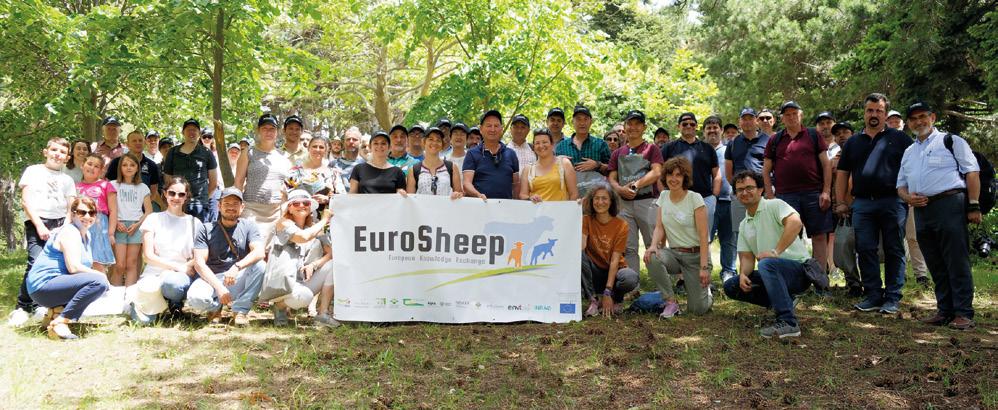
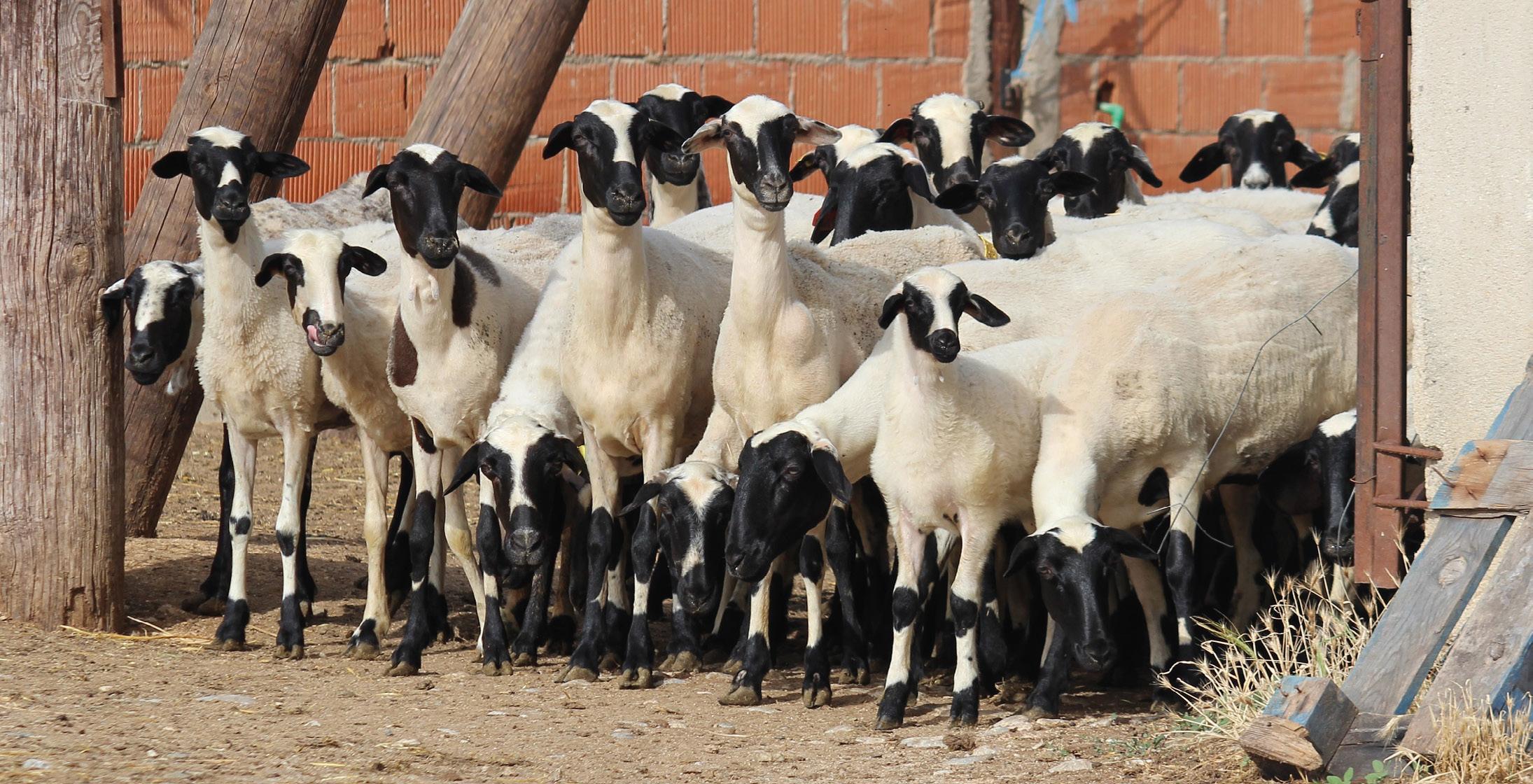
These solutions were shared between participants initially, but with the support of the Eurosheep network, and the sheep industry networks in each country, these solutions are now being communicated more widely. This pool of ideas and knowledge is an invaluable source of information for sheep farmers across Europe and beyond.
These solutions are available on the EuroSheep website (www.eurosheep.network), which has been set up in seven languages. The project is also showcased on social media platforms such as Twitter (@EuroSheepEU), Facebook (www.facebook.com/EuroSheep/) and a dedicated YouTube channel (EuroSheep EU), where videos of the best practices and solutions from the partner countries have been uploaded. These platforms also represent an invaluable resource for farmers, advisors and sheep industry stakeholders who may wish to get ideas or answers to help improve the profitability of their sheep systems by managing the health and nutrition of their animals.
The network is free and open to any farmers or advisors who wish to take part, and share ideas and knowledge on sheep nutrition and health.
claire.morgan-davies@sruc.ac.uk
Two key ingredients are vital in the delivery of high-quality physical services, the people and the processes. You can’t operate without both and the relationship between the two is fundamental. It’s ultimately what’s behind every soil sample, crop trial and lab test that we deliver at SAC Consulting, and I consider both to be our most prized assets.
Our physical services are diverse and dynamic and sit across many parts of the organisation. Our goal is to grow and innovate, ensuring the highest quality level of service to customers, consultants and commercial partners alike. From state-of-the-art data gathering within our Poultry Evaluation Unit, to meticulous soil testing in our labs, and dedicated specialists leading our Crop Trials teams, the name of the game is delivering a service.
Being part of an organisation that has such strong educational and research-based outputs, feeds directly into our commercial services.
SRUC and SAC Consulting, in close commercial partnership with leading poultry breeders Aviagen, operate and manage
a state-of-the-art processing plant at our Easter Bush estate, where we offer a combination of skilled technical staff and precision processing to ensure the production of high quality data, which we deliver back to our commercial partner.
The Crop Clinic offers a wide range of analytical services to help monitor and evaluate the health of our customers crops and soil. From soil PH levels and Potato Cyst Nematode testing, to silage samples or Powdery Scab in potato tubers, we continue to focus on increasing our testing capacity, investing in people and processes that will add strength and depth to the service.
Currently the biggest team within Physical Services, Crop Trials, is expertly placed to carry out the sewing, harvesting and data collection on potatoes, grass and arable crops. The service works across the organisation to deliver data to commercial customers specialising in plant protection, seed development, agronomic techniques and the development of sustainable IPM strategies.
The way information is consumed is constantly evolving and the way in which we deliver our physical services needs to be agile enough to cope with that evolution.
MALCOLM HOSIE, HEAD OF PHYSICAL SERVICE DELIVERY, SAC CONSULTING
It means forging new partnerships and strengthening existing ones. It’s taking the lead in offering innovative new services that will ensure we support our customers to stay ahead of the curve.
The future is also about ensuring we continue to create more depth and more coherence amongst our teams, constantly supporting opportunities for growth and creating strong development pathways for our specialist staff.
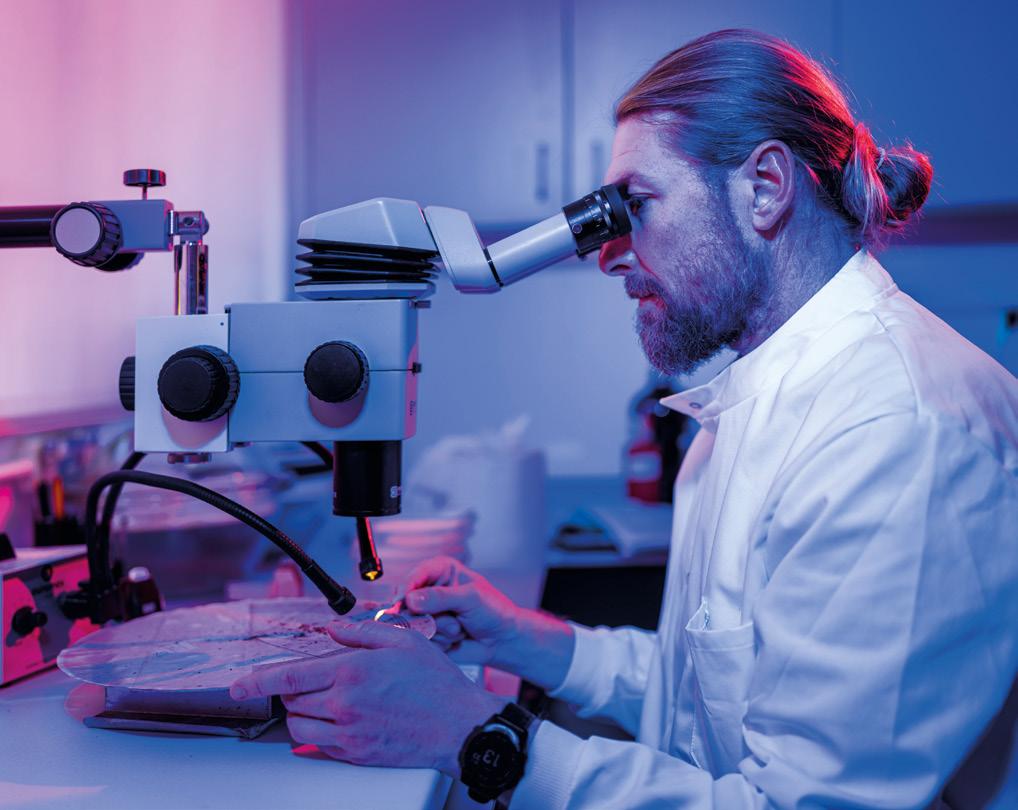
Technology is moving at a pace that can sometimes be hard to keep up with, particularly in agriculture. New products and technologies can often appear to hit the market on a weekly basis and competitors fight to come up with a product or process that gives them the edge. A.I. and GPS technology still appear to have the widest scope for development and there are huge advances in the availability of devices that collect and provide ‘real time’ data to support better monitoring of soils, crops and livestock.
Whilst many of the advantages of these technologies lie within their ability to speed up and automate a process, quality delivery of the end product still relies on a human; an expert to decipher the data and explain to our customers what we did and how we did it. Someone who’s both an expert in their field and also working at the rock face of the technology. Embracing and capitalising on emerging processes is essential and SAC Consulting’s pro-active approach to harnessing, helps us to take the lead in the delivery of our physical services.
However, people must always be at the heart of what we do and there needs to be an equal measure of people and processes, to reach our full potential.
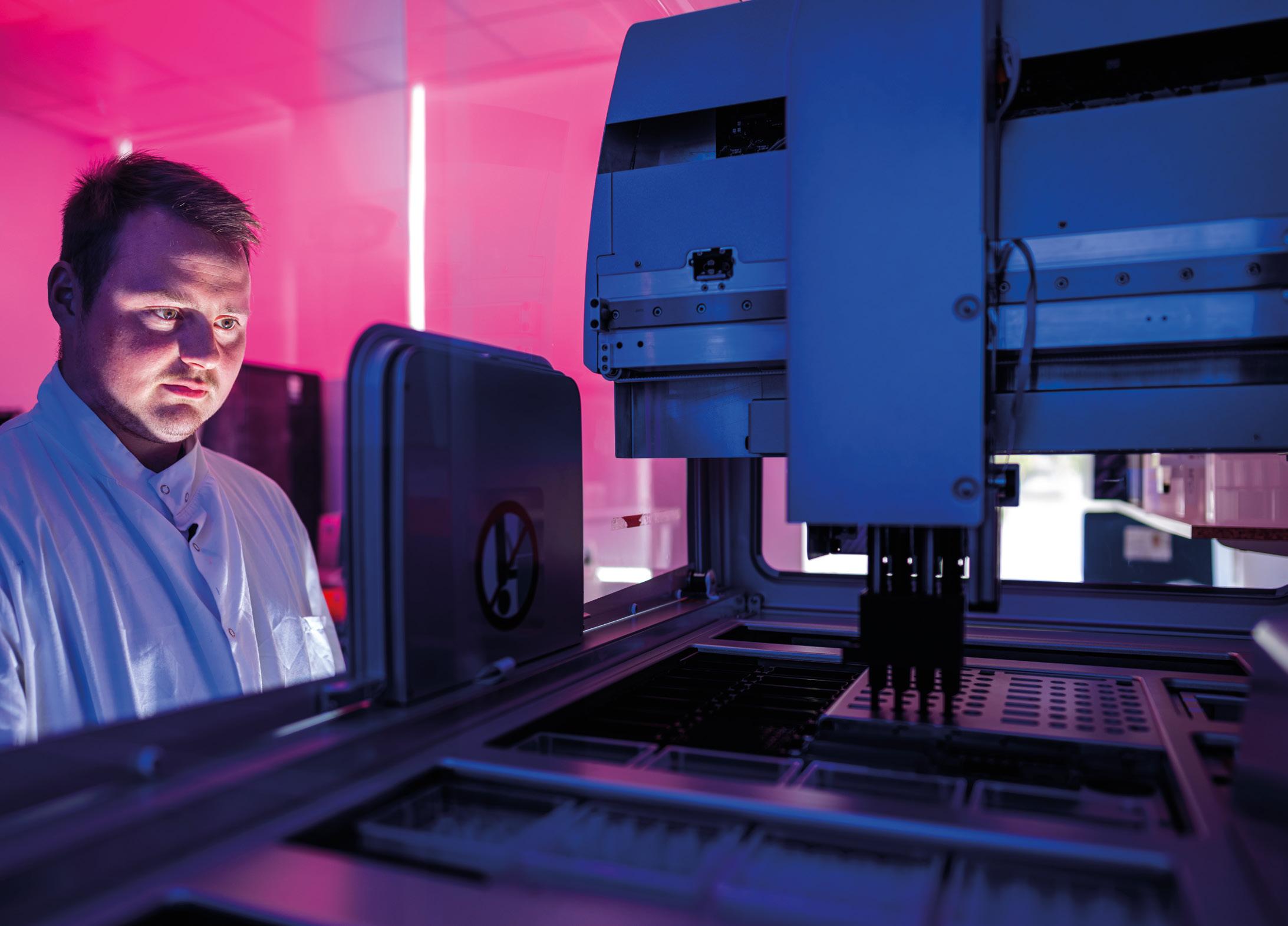
malcolm.hosie@sac.co.uk
“Our goal is to grow and innovate, ensuring the highest quality level of service to customers, consultants and commercial partners alike.”
In 2014, John was approached by Government in Belfast to build an expert working group looking at a Sustainable Agriculture Land Management Strategy. The extraordinary ambition of the resultant strategy was to baseline every single field, tree, and hedge in Northern Ireland. Despite concerns that it was too ambitious, three catchment pilots secured funding to put their strategy to the test. Led by the Department of Agriculture, Environment and Rural Affairs (DAERA),

and Agri-Food and Bioscience Institute (AFBI), the pilots secured 80% of farmers in the catchments to engage. 18 months later, farming practices were analysed, and an 80% behavioural change was recorded.
As a direct result, in Oct 2021, the Minister of Agriculture and Environment for Northern Ireland announced his desire to create a Soil Nutrient Health Scheme that would support all farmers in the region to measure their soil fertility and carbon on their land. In March 2022, the £45m Scheme was opened. It will take four years to complete, and Northern Ireland will notably be the first region in the world to audit every field, tree, and hedge, with the intention to do it every five years in order to effectively measure change with integrity. John explains how this approach created the right conditions for success.
“The right policies working in harmony with the right informed decisions by those who manage the land is the key to success – empowering farmers with knowledge about where they are now and about what improves best practice in land management. So, it is really important that we not only find practical solutions to drive positive behavioural change, but also help policy makers create good workable frameworks which rewards this change, to achieve better outcomes.”
With an illustrious career spanning practical farming, research, policy making and energy regulation, we spoke to Professor John Gilliland OBE about his diverse involvement in measuring and managing carbon in farms across Northern Ireland and what we can learn from his remarkable experiences.
Throughout his career, John has found that baselining soil fertility and carbon is at the heart of successful carbon management.
“Farmers want to know where they are today on their journey to net zero. To do that you must baseline both your greenhouse gas emissions and your carbon stocks, now. This informs them of where they are and empowers them to make better quality decisions where they need improvement. This is essential if we are to get more positive behavioural change. Using digital technologies such as aerial LiDAR surveys, alongside precision soil sampling and carbon calculator through tools such as Agrecalc, we better inform them on the uniqueness of the land they manage. We will give them quality detail they have never seen before in areas such as soil health and fertility, soil carbon, tree carbon, run-off risk maps, and how they are all interconnected, to reveal a more complete picture of their journey ahead.”
“Most Farmers are inspired by the quality of information they get, which allows them to make better quality decisions. A win for them and a win for the environment, at the same time. Farmers are then changing their behaviour because we have invested in their knowledge needs, rather than telling them what to do. One size does not fit all. There are no silver bullets anymore and we need policies and regulations, based on good science which unshackles farmers and allows them to manage their land in a manner that is fitting to their environment and their business.”
“Farmers want to know where they are today on their journey to net zero. To do that you must baseline both your greenhouse gas emissions and your carbon stocks, now.”
“As a farmer and a former President of the Ulster Farmers Union, I spent my life talking with farmers. In 2020, with six other farmers in Northern Ireland, we began a project to take seven farms on the journey towards net zero. The aim was to leverage knowledge from Devenish Nutrition’s research farm, The Lands at Dowth, onto farms with different enterprises, climates, and soil types. We started by creating baselines of emissions and carbon stocks, and their variations within a farm, and between different farms. The project is called ARC Zero.”

Throughout ARC Zero, they were helped several times by using Agrecalc. The first was that it informed each farmer what their current emissions are and where they were coming from. Secondly, was the ability of using the benchmarking embedded within it. When using the carbon calculator, the farmers were able to see where they were in comparison to their peers when they dissected their businesses, allowing them to speedily identify issues and address them.
“If we really want farming and the land-based sector to deliver for society, it is essential that we measure, report, and verify our journey on a regular basis and design a policy framework where farmers get paid to deliver for what society needs. We must help them to manage their land, not dictate how they use their land. The key is to educate, inform and empower decision making with data and information, create a baseline and then revisit that baseline on a regular basis. Only then will you have a journey that is robust, credible, and transparent, and one we are proud to communicate to all concerned.”
In the ARC Zero project, how carbon stocks were digitally measured and analysed was unprecedented. In return, the project intends to support further development of Agrecalc’s sequestration module, when those carbon baselines are remeasured, using the resultant data to help take the carbon module to the next level.
“My passion for Agrecalc is somewhat biased, as I have been with it since its beginning, having helped to secure the initial funding for its construction from the SRUC Board when I was a non-executive Director. It has several key things important to anyone looking at a lifecycle assessment calculator. Firstly, its accredited. Secondly, it does the calculations on a whole farm basis – that is what the legal entity is. Targets will eventually be set on the legal entity, and Agrecalc gets that. Thirdly, it is particularly good on livestock farming – and we have a lot of livestock in Ireland, just as in Scotland. Finally, it has an extraordinary science organisation behind it in relationship to SRUC. The pleasure of our ARC Zero journey is that we now know the gross emissions, gross sequestrations, and net emissions on those farms and where they are on their journey to net zero.”
John also reminds us that the net zero target mooted by Governments relates to the mean of the industry, rather than every business individually reaching net zero.
“It is not about everyone getting to net zero - some will fly, and some will struggle. We should allow flexibility between farms and create frameworks around that to ensure collective success. We also need to be clear that net zero is not about zero emissions. The definition of net zero is when all of your emissions are equal to all of your additional carbon stocks, on an annual basis. That is not widely understood by people. It is not about zero emissions and that often surprises people.”
The success of the ARC Zero project is its systems-based approach, resting on two processes. Firstly, baselining. Secondly measurement, and management. Finally, re-doing the baseline. John found that this gave complete transparency, informing them of where things were working well or where they could be improved. He said,
“Across the ARC Zero project farms, I am proud to say that our net farm carbon positions range from 25% of the journey to net zero to my own farm which is actually 3% beyond net zero today. If I add in my renewables and displacement of fossil fuel energy – I am 560% beyond net zero today. So, I am really passionate that it is absolutely achievable, when we are allowed to use all the tools in our toolbox, including carbon sequestration and on farm renewables.”
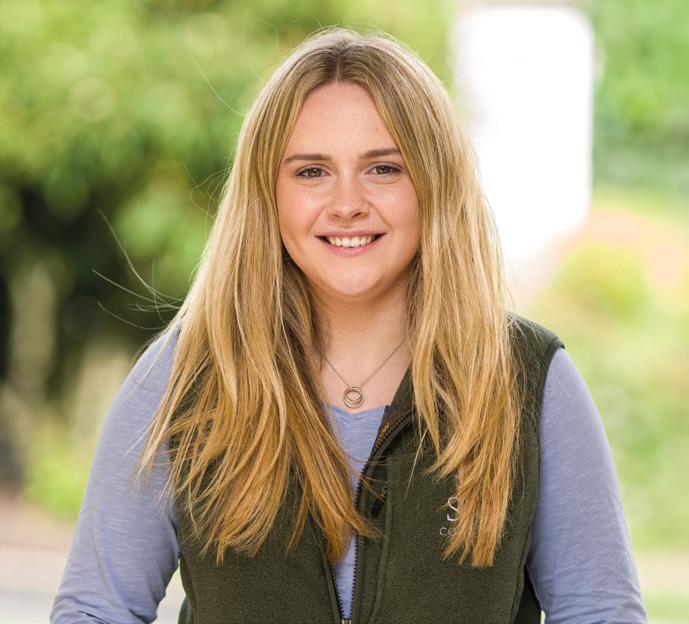

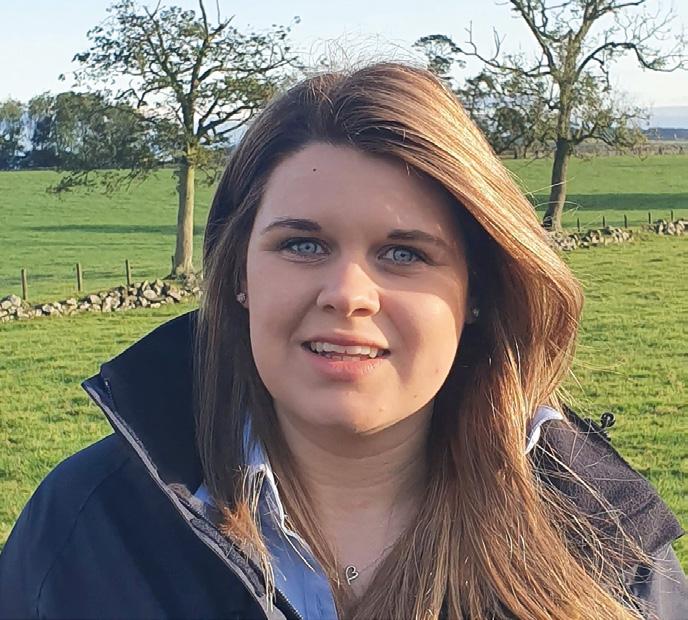



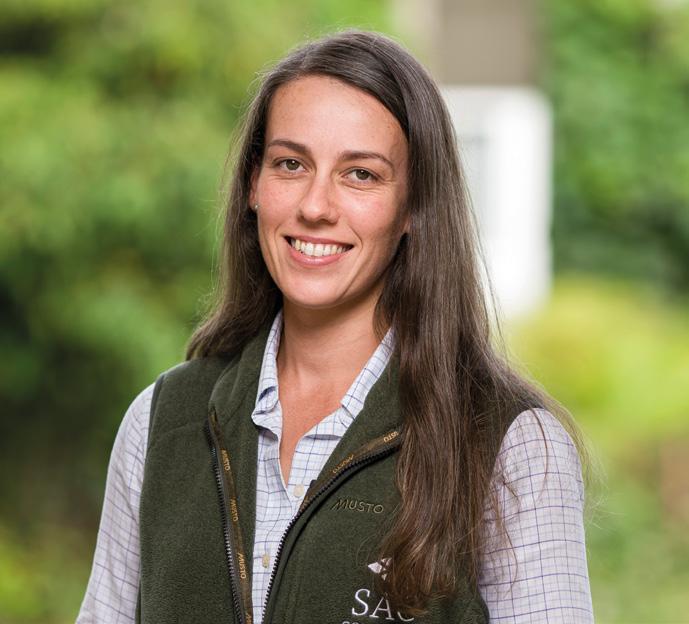
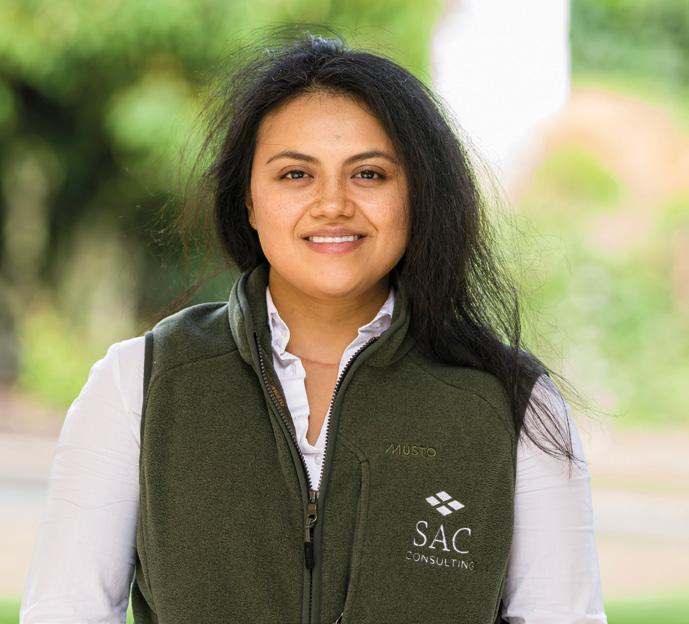
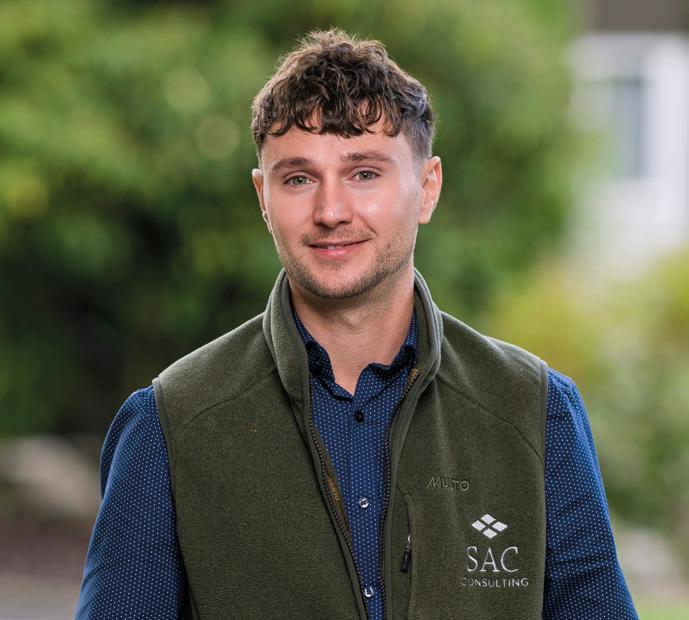 Agricultural Consultant, Kendal
Trainee Farm Business Analyst, Forfar
Food and Enterprise Consultant, Edinburgh
Agricultural Consultant, Stonehaven
Senior Agricultural Consultant, Perth
Trainee Agricultural Consultant, Aberdeen
Beef Consultant, Dingwall
Ruminant Nutritionist, Perth
Head Of Physical Service Delivery, Nationwide
Marcus Fox
Claire Mcildowie
Luisa Riascos
Sheena Mather
Andrew Coalter
Kirsten Craig
Calum Smith
Lorna Shaw
Malcolm Hosie
Agricultural Consultant, Kendal
Trainee Farm Business Analyst, Forfar
Food and Enterprise Consultant, Edinburgh
Agricultural Consultant, Stonehaven
Senior Agricultural Consultant, Perth
Trainee Agricultural Consultant, Aberdeen
Beef Consultant, Dingwall
Ruminant Nutritionist, Perth
Head Of Physical Service Delivery, Nationwide
Marcus Fox
Claire Mcildowie
Luisa Riascos
Sheena Mather
Andrew Coalter
Kirsten Craig
Calum Smith
Lorna Shaw
Malcolm Hosie
